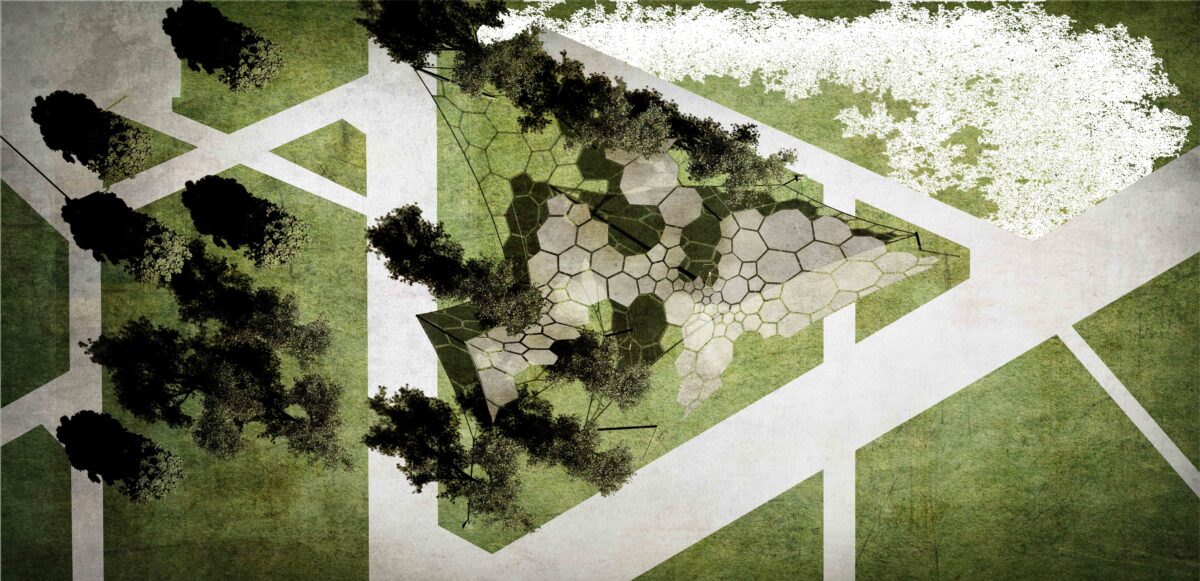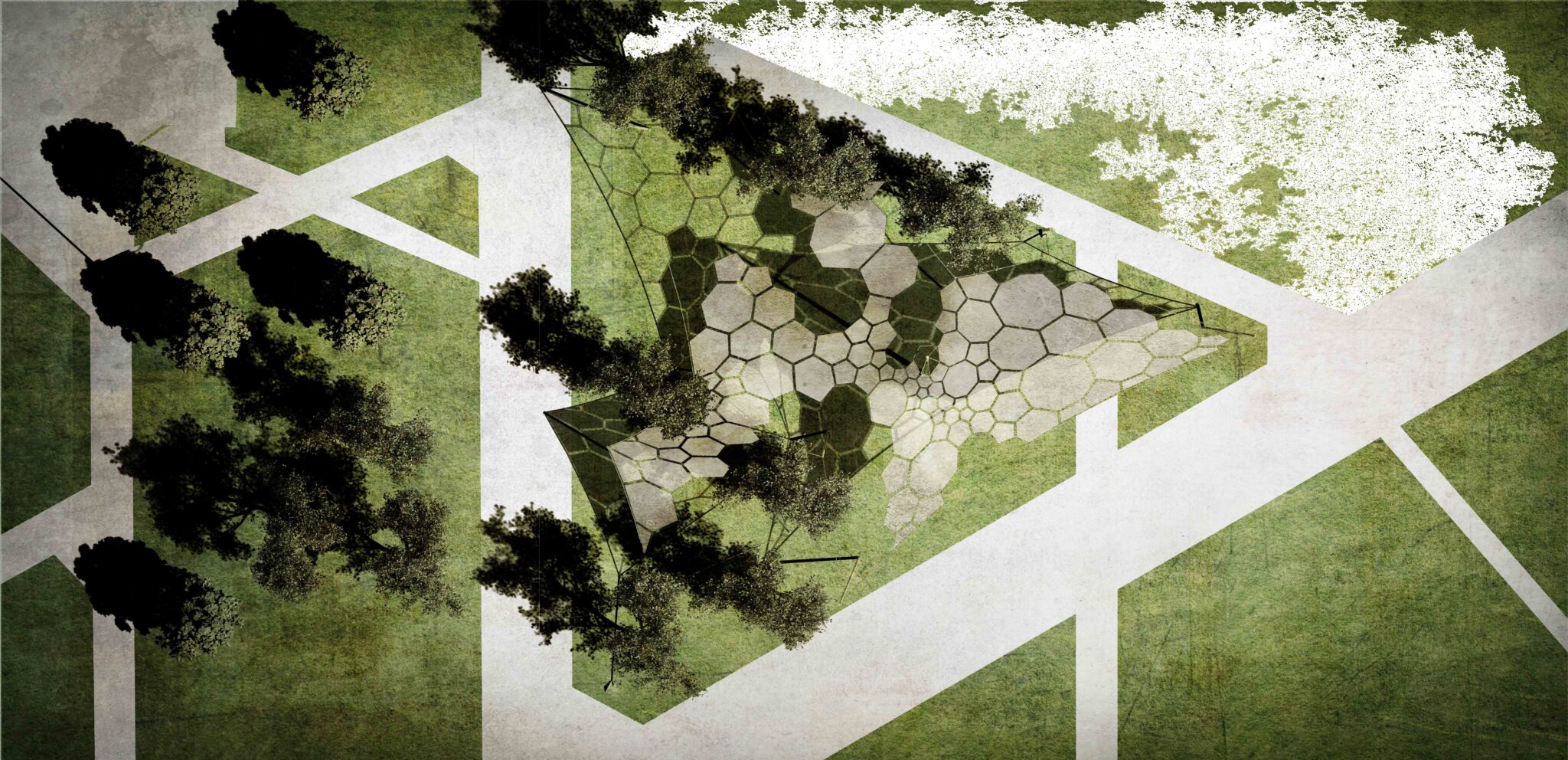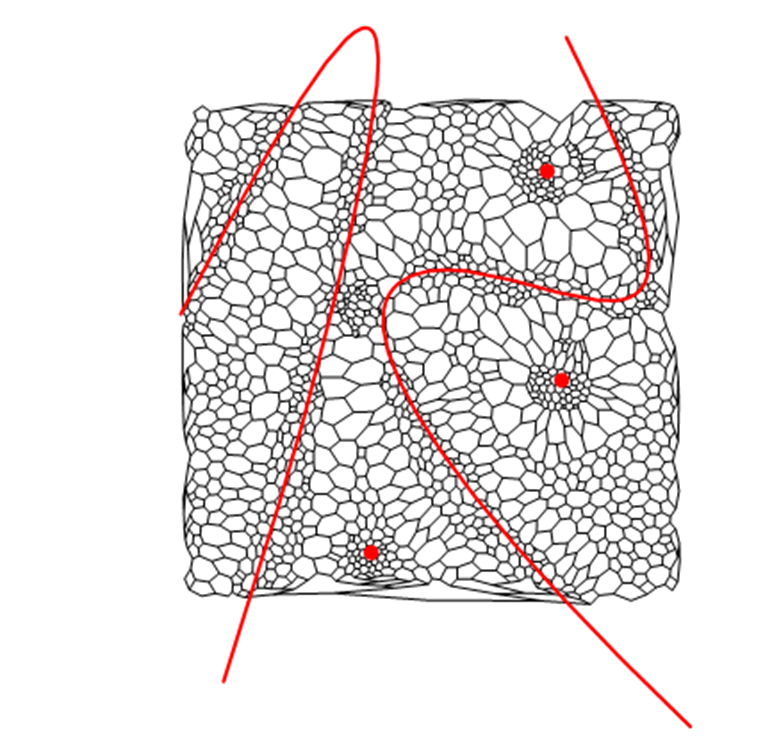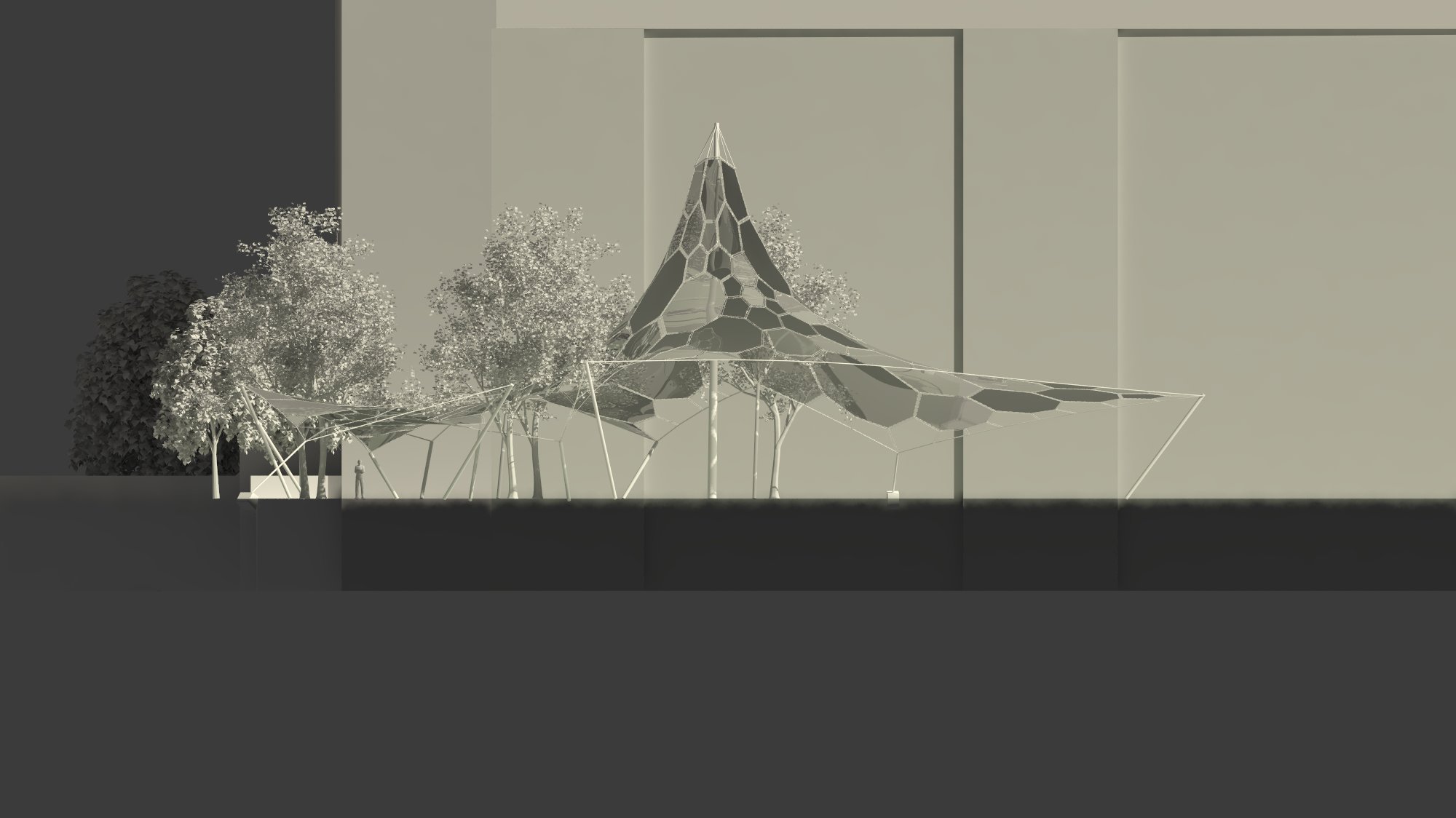IRREGULAR CABLE-NETS: EXPLORING IRREGULARITY AS A DRIVER FOR FORM AND STRUCTURE

ESR01- MULTIPLE STATES OF EQUILIBRIUM FOR BENDING-ACTIVE (TENSILE) STRUCTURES
ESR08- VIRTUAL PROTOTYPING FRP
AUTHOR: EVY L. M. SLABBINCK AND JAMES SOLLY
Images by Pedro A. G. S. Giachini and Bahar Al Bahar
Publication: Irregular cable nets: exploring irregularity as a driver for form and structure. In: Proceedings of the IASS Annual Symposium 2017, 25-28 Sept. 2017, Hamburg, Germany, by Giachini, P. A. G. S.; Bahar, B. A.; Solly, J.; Slabbinck, E. L. M.; Knippers, J.
Unlike conventional cable-nets that typically use evenly spaced cables laid out in an orthogonal-grid, introducing irregular patterns into the form-finding process of cable structures enables designs with non-directional grids and varying cable concentration. These characteristics are investigated in this paper as a mean of expanding the design space of such systems and of achieving a more equal force distribution in the cable network. A comparison between the structural performance of cable nets with orthogonal and Voronoi cable meshes is performed that evaluates how these different cable arrangements transfer forces within the network and determines the structural mass required by each system to achieve comparable deflections. Furthermore, this paper explores the cable discontinuity characteristic of Voronoi grids as a feature that enables cable section optimization throughout the system. A similar optimization strategy is also applied to orthogonal cable-nets and a study comparing possible weight reduction through section optimization is presented.
This paper was part of a project done in the ITECH – itke seminar: Form and Structure, coordinated by E. L. M. Slabbinck, lectured (among others) by J. Solly and E. L. M. Slabbinck





